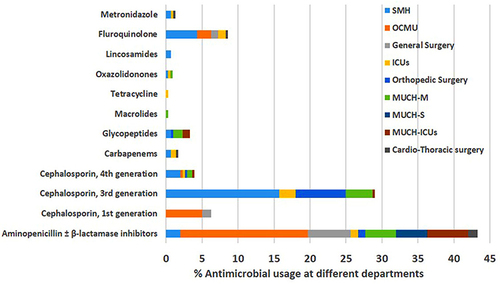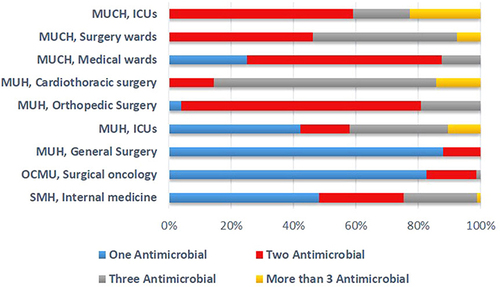Figures & data
Table 1 Demographic Characteristics of Inpatients Admitted to MUH and Who Participated in Antimicrobial Point Prevalence Surveys
Table 2 Source of Infection for Antimicrobial Prophylaxis and/or Treatment
Table 3 Quality Indicators of Antimicrobial Use at MUH, Egypt versus Previously Reported African Indicators
Table 4 Descriptive Statistics of Patients Who Received Antimicrobials for Surgical Prophylaxis, n (%)
Figure 1 % Antimicrobial drug groups prescribed as a first choice at the different departments/centers. This bar chart shows that 3rd generation cephalosporins and fluoroquinolones are highly prescribed at SMH. Aminopenicillins ± β-lactamase inhibitors are the first to be prescribed at OCMU.

Figure 2 The number of antimicrobials received per patient at the different departments/centers. This bar chart shows that a single antimicrobial agent was the choice in general surgery and OCMU (surgical unit). However, two and three antimicrobial agents are used in ICUs, MUCH, and cardiothoracic and orthopedic surgery. The number of antimicrobial drugs was converted into percent for graphical illustration.

Table 5 Pharmaco-Epidemiology of Top Five Prescribed Initial Antimicrobials
Table 6 Patient Medications Interacting with the Prescribed Antimicrobials
